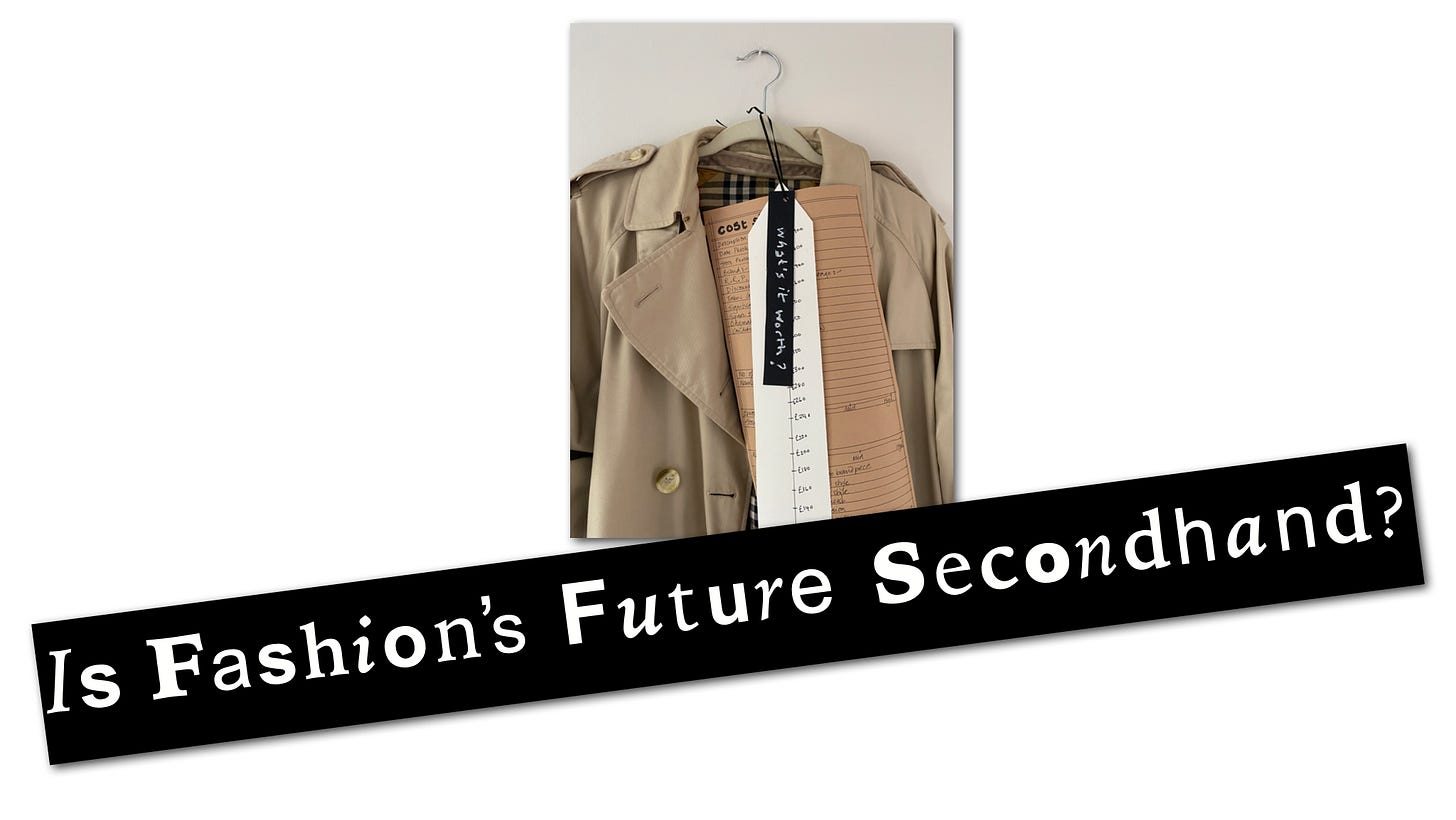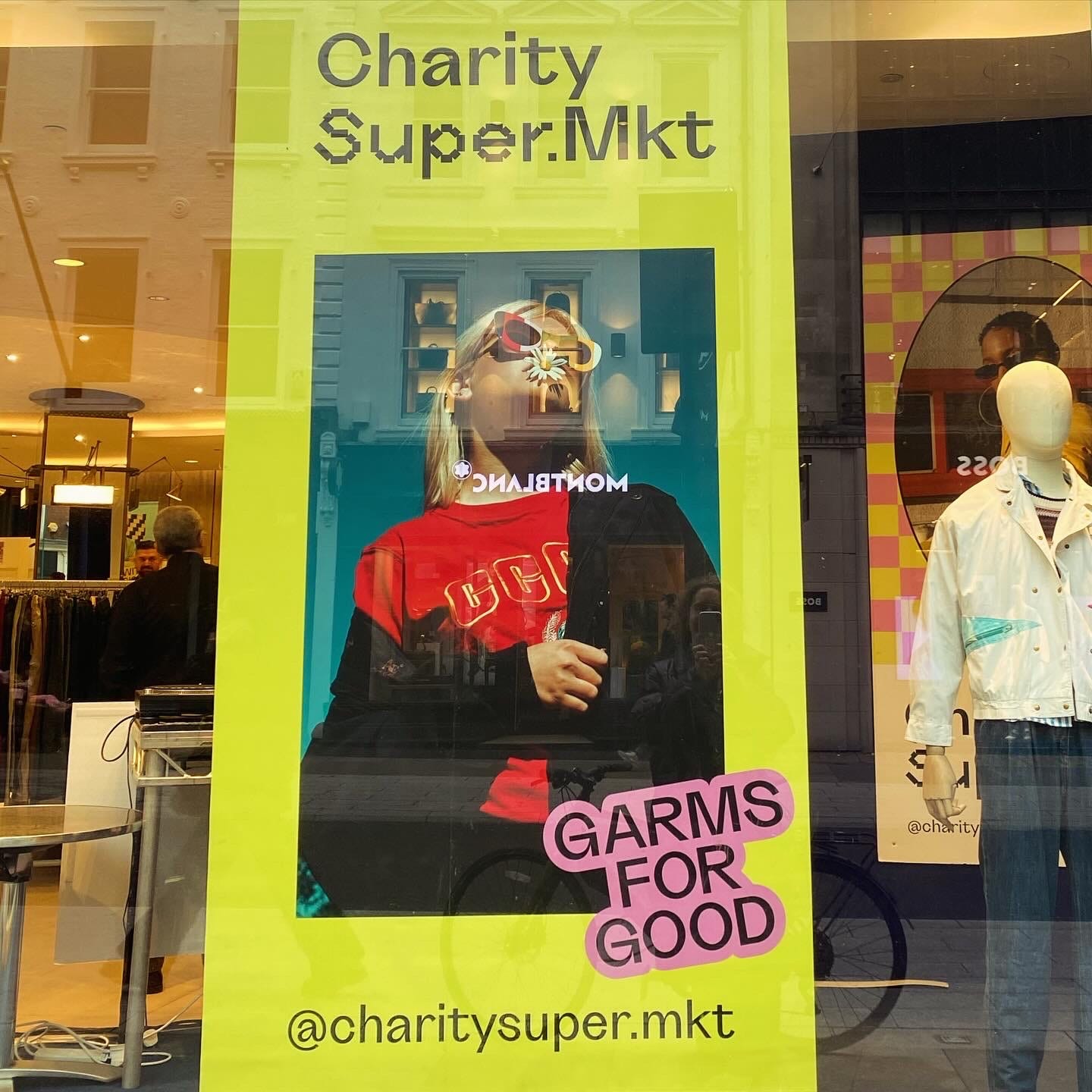Is Fashion's Future Secondhand?
Apparently there are already enough clothes on the planet to dress the next six generations; so is it time for the fashion industry to stop making new clothes and embrace a secondhand fashion future?
Is Fashion’s Future Secondhand? When I chose this to be the title of the panel discussion I’m hosting as part of the MA Fashion Futures Graduation show at London College of Fashion this week I was being provocative.
I don’t really believe fashion’s future will be secondhand. But, with the promotional material for Generation Rewear, a collaborative project between the British Fashion Council and Vanish, saying that “globally there are enough clothes already in existence to dress the next six generations”, it does seem reasonable to think that, in the near future, our wardrobes will contain a lot more secondhand, or third, and even fourth-hand clothes.
And this matters because, for the fashion industry to meet the targets set in the Paris Climate Accord, it will need to start making fewer new clothes, and reusing and reselling a much higher percentage of the clothes that it has already produced.
In fact, targets set by ReLondon and The Institute of Positive Fashion to reduce fashion’s carbon footprint, aim to make a quarter of all our clothing purchases secondhand. Could that be possible?
If you’ve got opinions you’d like to share about fashion’s secondhand future, then register using this link and join in the conversation.
What would this secondhand fashion future look like?
My MA Research explored many possible futures for the secondhand market, and I’ve listed some of them below.
As you read them I invite you to consider which, if any, would be preferable?
And to keep up to date with my research.
Consolidation online?
If you read the fashion business press, you probably already think that the future development of the secondhand market will mirror the mainstream industry, and involve consolidation online, dominated by large scale recommerce platforms like Vinted, Depop and The Vestiaire Collective.
But for consumers, unless they’re looking for something specific, browsing millions of unique items online is not an easy, or an inspiring, way to shop. Plus, my research suggests that people’s nervousness around buying secondhand clothes that they can’t see, touch or try on, is probably suppressing preloved prices and the profitability of online secondhand businesses?
High Street reinvention?
Interestingly, as mainstream fashion retailers are abandoning local High Streets, vibrant ecosystems of charity stores, vintage warehouses and curated secondhand boutiques have started to fill the empty spaces. In my neighbourhood, on Sundays, there are queues of people waiting for coffees in Crisis, or fitting rooms in Traid, and proudly carrying their Beyond Retro bags like trophies.
After visiting the Charity Super.Mkt pop-up on Bond Street, a friend compared the experience to shopping in the Oxford Circus Top Shop during its early 00’s heyday; describing it as fun, vibrant and full of unique treasure waiting to be discovered.
I believe there could be a real opportunity for secondhand businesses and charities to reinvent physical retailing for the 21st century.
Entrepreneurial innovation?
For would-be entrepreneurs and side hustlers, the combination of a secondhand market overflowing with cheap stock, lots of potential pop-up spaces, and burgeoning social commerce opportunities, make starting a resale business very appealing.
But, whilst this is encouraging the creativity, innovation and reinvention described above, many secondhand shoppers have concerns that resellers are snapping up all the good stuff, pushing up prices and making it harder for the rest of us to find preloved bargains? What do you think?
Charitable evolution?
Currently, charities seem to be benefiting from the growth in the secondhand market, and there are now as many charity shops on our streets as mainstream fashion stores in the UK. But, should we be worried that the commercialisation of the secondhand market, combined with the ability to make money from unwanted clothing through peer to peer resale platforms, will have a detrimental impact on charities, and the causes they support, in the future?
Mainstream integration?
As more and more businesses test their own resale offers, is it inevitable that the secondhand market will be subsumed by mainstream brands? As part of this future scenario, it seems reasonable to question whether brands should be allowed to view the secondhand market as an additional revenue stream? Could it become a lever that can enables them to reduce their reliance on producing new clothes?
Can a secondhand fashion future be a stepping stone to a de-growth fashion industry?
Or will fast fashion be the death of the secondhand market?
Many of the people I spoke to during my research were concerned for the future of the secondhand market. Their very real fear is that declining prices, and quality, in the mainstream fashion industry and the rapid wardrobe churning that fast fashion business models promote will make the secondhand stock of the future less desirable.
To qualify as vintage clothes must be over twenty five years old, and typify the trends of their era. Can you imagine the fast fashion apparel being produced now surviving that long?
Perhaps the elephant in the room is
What kind of secondhand fashion future should we be hoping for?
Wandering around the Charity Super.Mkt pop-up, that briefly colonised the old Fenwicks Department Store on Bond Street, I found myself wondering if it was a prescient sign of a preloved, and charitable, fashion future or a fleeting vision of what nearly happened?




